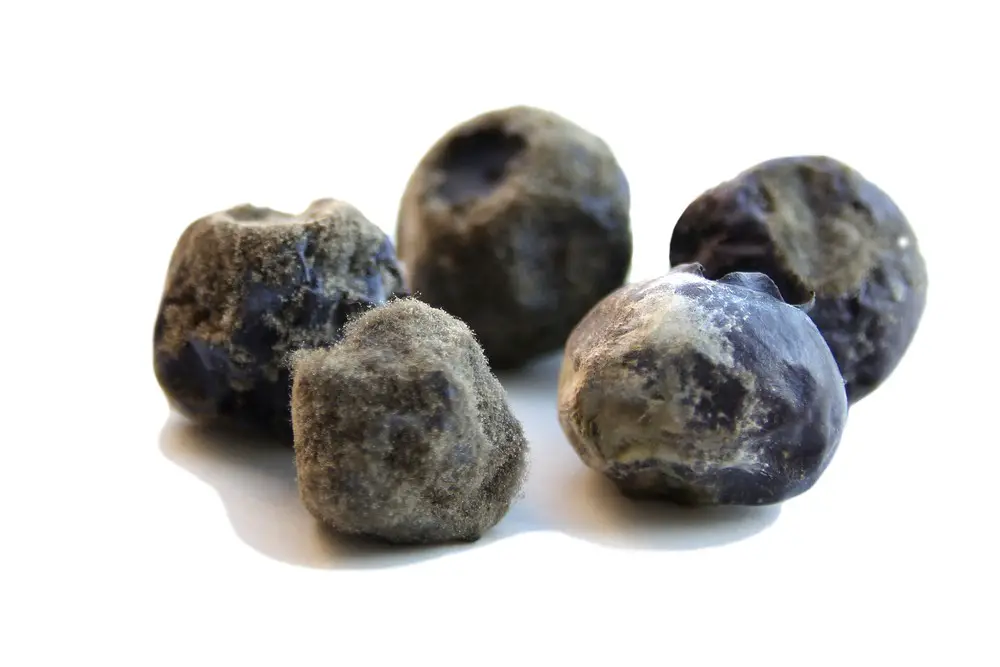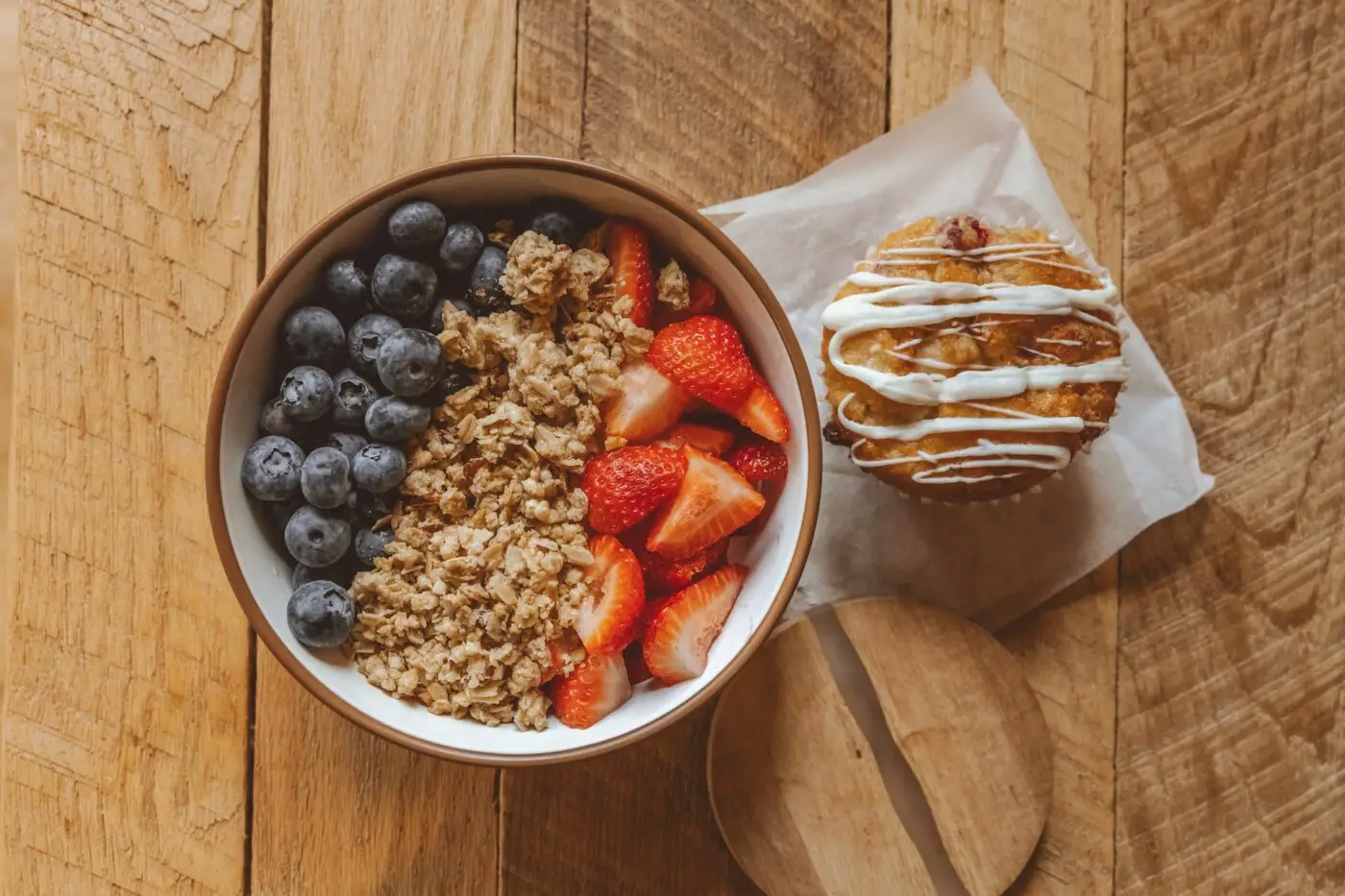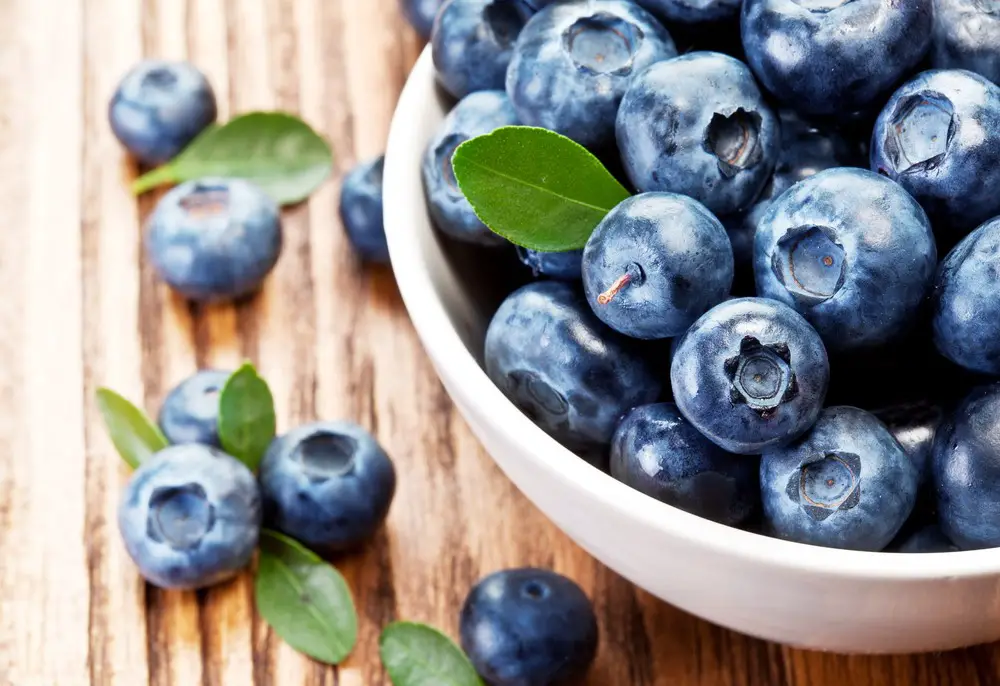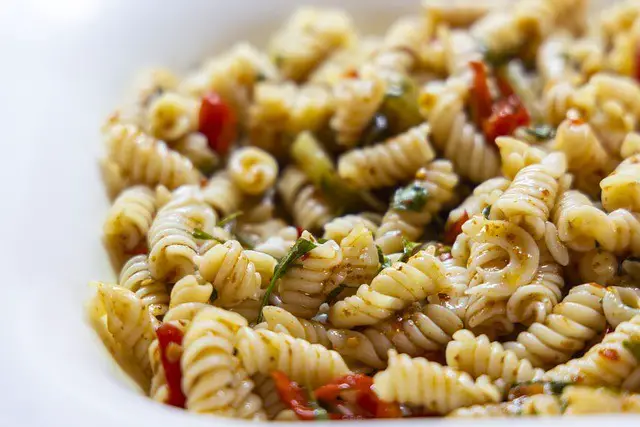Determining the freshness of blueberries is essential for their taste and nutritional value. When blueberries go bad, they not only lose their delightful flavor but also their health benefits. There are a few clear signs to look for to recognize if blueberries are no longer suitable to eat. Mold is the most obvious indicator, typically presenting as fuzzy gray or blue spots. Fresh blueberries should be firm to the touch with smooth skin, so if you find them shriveled, soft, or leaking juice, they may be past their prime.
Color is another telltale sign. While fresh blueberries are deep purple-blue to blue-black, discolored berries that have turned red or green may have gone wrong. Smell and taste can also be reliable senses; any sour or fermented odor is a red flag, as is an off taste when you sample one. It’s essential to scrutinize your blueberries before consumption to ensure safety and quality. Maintaining blueberry freshness is also key to prolonging their shelf life, which involves proper storage conditions, such as keeping them cool and dry.
Key Takeaways
- Look for mold, softness, and juice leakage as signs of bad blueberries.
- Discoloration, sour smell, and an off taste indicate the berries may have spoiled.
- Proper storage can extend the freshness and edibility of blueberries.
 Identifying Bad Blueberries
Identifying Bad Blueberries
When inspecting blueberries for freshness, it’s crucial to consider multiple aspects, such as color, texture, and aroma, that indicate spoilage.
Visual Inspection
Start by examining the color and appearance of the blueberries. Fresh blueberries should have a uniform deep blue hue with a silvery bloom.
- Discoloration: Look for berries that have turned a reddish color or have brown spots, which can signal decay.
- Mold: Check for white or gray mold growth, especially in the stem area. Moldy berries often indicate that nearby ones may also be compromised.
Key takeaway: Discoloration and mold show that blueberries are past their prime.
Texture Assessment
Fresh blueberries are firm and plump. A change in texture is a strong indicator that they should not be eaten.
- Softness: Gently squeeze a few berries. If they feel mushy or have lost their firmness, they may be overripe or beginning to rot.
- Shriveling: Shrivel or wrinkles on the surface indicate dehydration or aging.
Key takeaway: Mushy or shriveled blueberries should be discarded to avoid potential health risks.
Odor and Taste Evaluation
Spoiled foods can often be identified by their odor and taste, which deviate from the norm.
- Odor: Sniff for any off-putting or unusual smells. A sour or fermented aroma can be a sign of bacterial growth.
- Taste: If a blueberry’s appearance and texture are questionable, avoid tasting it as it may lead to food poisoning.
Key takeaway: Trust your nose—if blueberries smell off, it’s best to throw them away.
Checking for Moisture and Mold
Blueberries should be relatively dry when stored properly. Excess moisture can accelerate mold formation.
- Humidity: Berries should not be damp or sticky. Moist conditions can foster mold spore growth, leading to spoilage.
- Visible Mold: Apart from white or gray mold, be wary of any fuzzy growths or white spots, which are signs of mold.
Key takeaway: Dryer conditions help keep blueberries fresh longer; discard any showing excessive moisture or visible mold.
 Proper Storage Techniques
Proper Storage Techniques
Storing blueberries correctly is essential for maximizing shelf life and preventing spoilage. Whether refrigerated or frozen, maintaining ideal storage conditions is paramount to keep these berries fresh and mold-free.
In the Refrigerator
Blueberries need to be kept cool and dry in the fridge. Here’s how to do it right:
- Temperature: Store blueberries in the refrigerator at 35-40°F (1.7-4.4°C) to slow spoilage.
- Humidity: Aim for moderate humidity in the fridge, typically provided in the crisper drawer.
- Moisture Control: To combat excess moisture, which can lead to mold growth, gently wrap the blueberries in paper towels.
- Air Circulation: Avoid sealing the blueberries in airtight containers in the fridge, as they need airflow. Instead, loosely cover them with plastic wrap or use a container with perforations.
By following these tips, blueberries can stay fresh in the refrigerator for approximately 10 days. However, always inspect them before use; if the berries have shrunk, developed mold, or smell off, it’s time to toss them out.
Key Takeaway: When refrigerating blueberries, focus on temperature control, moisture reduction, and adequate air circulation to significantly prolong their freshness.
Freezing Blueberries
Freezing is a fantastic way to extend blueberries’ shelf life even further. Check these steps for optimal freezing:
- Preparation: Before freezing, rinse blueberries and dry them thoroughly. Any residual water can cause the berries to clump and form ice crystals.
- Freeze Separately: Spread the blueberries in a single layer on a baking sheet and freeze until solid. This prevents them from sticking together.
- Storage Containers: Transfer the frozen blueberries to airtight containers or freezer bags. This protects against freezer burn and flavor loss.
- Temperature: Set the freezer to 0°F (-18°C) or lower to maintain quality.
Frozen blueberries will retain quality for 6 to 12 months. When ready to use, they can be thawed in the refrigerator or added directly to recipes like smoothies or baked goods.
Key Takeaway: Freezing blueberries individually before placing them in airtight containers ensures easy portioning and maintains their quality for a delightful taste anytime.
 Preventative Measures
Preventative Measures
Taking preventative measures is crucial to maintain the freshness and edibility of blueberries. Proper washing, drying, and inspection techniques can significantly reduce the risk of spoilage.
Washing and Drying
Before stashing blueberries in the fridge, giving them a good wash helps remove unwanted pesticides and debris. Here’s how to do it effectively:
- Steps for Washing:
- Mix 3 parts water and 1 part vinegar as a washing solution.
- Soak the blueberries gently, submerging them for about 5 minutes.
- Rinse the berries thoroughly under cold running water.
- Drying Method:
- Lay out the berries on a clean towel in a single layer.
- Gently pat them dry with another towel, careful not to bruise the fruit.
Key Takeaway: Vinegar solution assists in cleaning, while proper drying prevents moisture-related spoilage.
Handling and Inspection
Proper handling and inspection of blueberries ensure that only the best quality fruit is stored, helping to prolong its shelf life:
- Handling Tips:
- Use clean hands or utensils to prevent transferring bacteria to the berries.
- Avoid squeezing the blueberries, which can cause bruising and accelerate decay.
- Inspection Strategy:
- Check for stems, leaves, and any other debris that should be removed.
- Look for signs of pests or mold, discarding any affected blueberries to avoid contaminating the good ones.
Key Takeaway: Gentle handling combined with a vigilant inspection helps keep the berries fresh and extends their shelf life.
Health and Nutrition Information
Understanding the health implications of fresh and spoiled blueberries is crucial for mindful consumption. This section dissects how blueberries can be a boon to one’s health and the potential risks of eating spoiled fruit.
Benefits of Fresh Blueberries
Blueberries are a powerhouse of nutrients. These small fruits are exceptionally rich in vitamins C and K and manganese. They also boast a high concentration of antioxidants, which protect the body from harmful free radicals. Incorporating blueberries into one’s diet may contribute to heart health and offer other health benefits, such as improved memory and lower blood pressure.
- Vitamins: A serving provides about 24% of the recommended daily vitamin C and 36% of vitamin K.
- Antioxidants: Anthocyanins, the compounds that give blueberries their color, are known for their potent antioxidant properties.
Key Takeaway: Fresh blueberries are nutritious, offering essential vitamins and antioxidants that support overall health.
Risks of Consuming Spoiled Blueberries
Eating spoiled blueberries poses a health risk, including food poisoning and gastrointestinal issues. Spoiled blueberries have a detrimental effect on safety, which can manifest through a series of symptoms such as nausea, vomiting, and diarrhea. It’s critical to recognize signs of spoilage before consumption to avoid these health complications.
- Food Poisoning Symptoms: Be vigilant for symptoms of foodborne illnesses, and seek medical help if necessary.
- Spoilage Signs: Discoloration, mold, a mushy texture, and an off smell indicate that blueberries are no longer safe to eat.
Key Takeaway: To maintain safety, always inspect blueberries for spoilage signs to prevent potential health risks associated with consuming bad fruit.
Maximizing Blueberry Use
To fully enjoy blueberries and reduce waste, knowing how to utilize them, even past their prime, is crucial. This section offers expert advice on how to get the most out of every berry.
Utilizing Overripe Berries
Overripe blueberries may lack the firmness of their fresher counterparts, but they still hold great potential in the kitchen. Here are some smart ways to put them to good use:
- Smoothies: They become natural sweeteners, adding a rich flavor.
- Jam: Simmer over low heat with sugar for a homemade spread.
Key takeaway: Overripe berries can be transformed into delicious treats instead of discarding them.
Ways to Salvage Slightly Bad Blueberries
Even slightly bad blueberries can often be salvaged with a bit of creativity. Before considering disposal, try these strategies:
- Baking: Fold them into muffins or pancakes where their imperfect texture won’t be noticeable.
- Cooking: Use them as a sauce base to accompany desserts or meats.
Key takeaway: With the right recipes, slightly off blueberries can still enhance various dishes.
Understanding Blueberry Varieties
When exploring blueberry varieties, it’s essential to recognize that North America is the world’s largest producer, boasting numerous types that vary in size, flavor, and texture. These variations affect not only the taste and culinary uses but also how we determine their freshness and when they might go bad.
Common North American Varieties:
- Highbush: The most widely cultivated type; it delivers large, plump fresh berries suitable for eating raw or in dishes.
- Lowbush: Often referred to as “wild” blueberries, these are smaller, richer in antioxidants, and commonly used in jams and baking.
Texture & Flavor Differences:
- Firmness: A fresh highbush berry usually feels firm to the touch, while a lowbush berry, although smaller, should still resist squishing.
- Skin: It should be smooth and intact, with a slight natural shimmer.
Color as an Indicator:
- Ripe blueberries are deep blue with a dusting of gray bloom; any hints of red indicate under-ripeness, while brown or shriveled skin signals over-ripeness or spoilage.
Always opt for firm, plump, and free of moisture or mold when selecting fresh berries. Any signs of wrinkling or leakage may suggest the berries are past their prime. In your quest to enjoy these delightful fruits, paying attention to these details ensures you get the best experience from each variety.
Key Takeaway: Mind the variety, as each has its signs of freshness. Firmness, skin integrity, and color are reliable guides across all blueberries.
Frequently Asked Questions
Navigating the freshness of blueberries doesn’t have to be tricky. Understanding a few telltale signs will ensure you pick the best of the bunch, whether you’re ready to snack on them immediately or store them for later use.
What are the signs of spoilage in blueberries?
One can spot spoiled blueberries by their moldy spots, squishy texture, or off smell. Discoloration, such as berries turning red or brown, is another red flag. If the blueberries have wrinkled skin, they are often past their prime.
Key takeaway: Trust your senses; visual and olfactory cues are reliable indicators of blueberry spoilage.
How can one determine if a blueberry is ripe and ready to eat?
A ripe blueberry will be plump, firm to the touch, and have a uniform deep blue color with a light, silvery dusting. If the berry gives to a light squeeze without bursting, it’s usually good to go.
Key takeaway: Find a balance between firmness and a slight give to determine ripeness.
Can consuming moldy blueberries cause harm?
Yes, eating moldy blueberries can cause harm as mold may produce mycotoxins that harm one’s health. Symptoms might range from digestive issues to allergic reactions. It’s best to discard moldy blueberries to avoid potential health risks.
Key takeaway: Throwing away moldy blueberries is safer to prevent adverse health effects.
What is the typical shelf life of blueberries in the refrigerator?
Blueberries typically last about 1 to 2 weeks in the refrigerator when appropriately stored in a covered container and kept dry. Keeping them in a crisper drawer can also help extend their freshness.
Key takeaway: Proper storage in the fridge can keep blueberries fresh for a couple of weeks.
How can you distinguish if blueberries have turned too sour to eat?
Blueberries that are too sour to eat often have an overtly tart taste which deviates from their natural sweet-but-slightly-acidic flavor profile. They may also appear shriveled and lack juiciness.
Key takeaway: Sourness beyond the usual tang can indicate overripe, inedible berries.
Are there any health risks associated with eating old blueberries?
Consuming old blueberries, especially if they have begun to ferment, can lead to digestive discomfort or more severe symptoms if mold is present. Berries past their peak are best replaced with a fresh batch for safety and taste.
Key takeaway: Avoiding old blueberries to prevent potential health issues is best.







